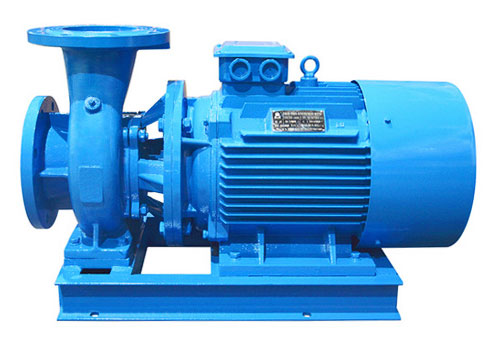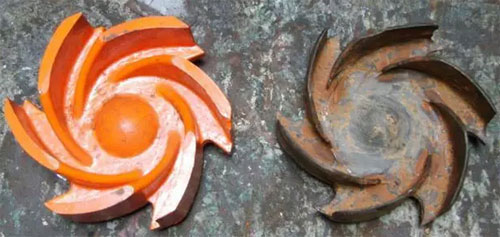Centrifugal pumps are integral components in various industries, including water treatment, chemical processing, oil and gas, and power generation. Despite their widespread application, centrifugal pumps face operational challenges, one of the most critical being cavitation. This phenomenon not only impacts the efficiency of pumps but can also lead to significant damage over time.
In this article, Inverter.com explores the effects of cavitation on centrifugal pumps and outlines methods to prevent it, ensuring optimal performance and longevity.

What is centrifugal pump cavitation?
Centrifugal pump is a kind of pump commonly used in production, there are many kinds of centrifugal pump, users often use centrifugal pump in production will often produce cavitation, so what are the parts of centrifugal pump that produce cavitation? The harm and pre-prevention measures of cavitation erosion in the following ways.
When the centrifugal pump is running, the pressure of the fluid drops as it goes from the pump inlet to the impeller inlet, and the pressure of the liquid is lowest near the blades. When the pressure near the impeller vane inlet is less than the saturated vapor pressure at the liquid delivery temperature, the liquid vaporizes. At the same time, it is possible that the gas dissolved in the liquid overflows, and they form a lot of bubbles. When the bubble flows with the liquid to the place where the pressure in the channel is high, the external liquid pressure is higher than the vaporization pressure in the bubble, and the bubble will condense. The collapse forms a cavity.
The liquid around the moment rushes into the cavity at a very high speed, causing the liquids to collide with each other, causing the partial pressure to suddenly increase (some can reach several hundred atmospheres). This not only hinders the normal flow of the fluid, but more seriously, if these bubbles collapse in the vicinity of the impeller, the liquid is like a small number of small warheads, continuously striking the metal surface (frequency up to 2000~3000HZ), the metal surface will be caused by Impact fatigue and peeling.
A part prone to cavitation of centrifugal pump
1. The low pressure side near the inlet edge of the blade at the front cover plate with high curvature of the impeller.
2. The low pressure side of the volute tongue and guide vane near the inlet edge of the chamber.
3. Sealing clearance between the outer circle of the blade tip and the shell without the front cover plate and the low pressure side of the blade tip.
4. The first stage impeller in the multi-stage pump.
What are the hazards of centrifugal pump cavitation?
1. Pump performance degradation
The energy exchange in the impeller is interfered with and destroyed during cavitation of the pump. The performance of external characteristics is Q-H curve, Q-P, Q-η curve decreases, which will interrupt the liquid flow in the pump and can not work. For low specific speed, because the passage between blades is narrow and long, once cavitation occurs, the bubble fills the entire flow channel, and the performance curve drops suddenly. For the medium and high specific speed, the flow channel is short and wide, so it takes a transition process for the bubble to develop from occurrence to filling the whole flow channel. The corresponding performance curve begins to decrease slowly, and then decreases sharply when it increases to a certain flow rate.
2. Corrosion of flow passage components
Due to the high frequency (600~25000HZ) impact caused by bubble burst, the pressure is as high as 49Mpa, resulting in mechanical denudation of metal surface. Due to the release of heat during vaporization and the hydrolysis of thermoelectric batteries, the oxygen produced causes metal oxidation and chemical corrosion.
3. Increased noise and vibration
The implosion of vapor bubbles creates a characteristic "crackling" sound, often described as similar to gravel passing through the pump. This noise is accompanied by increased vibration, which can affect the stability of the entire system.
4. Impeller damage
The repetitive collapse of vapor bubbles near the impeller surfaces results in pitting and erosion, reducing the impeller's structural integrity and efficiency.
5. Seal and bearing wear
Excessive vibration caused by cavitation accelerates the wear and tear of seals and bearings, potentially leading to leaks and mechanical failures.
6. Reduced lifespan.
Prolonged exposure to cavitation can cause cumulative damage, significantly reducing the operational lifespan of the pump.
7. Flow instabilities
Cavitation introduces irregularities in the flow pattern, which can lead to pressure fluctuations and operational inconsistencies.
Improve anti-cavitation measures
1. Improve measures for effective cavitation margin of liquid intake device
Increase the pressure of the liquid level in the liquid storage tank before the pump to increase the effective cavitation margin. Reduce the installation height of the suction device pump. Change the suction device into the reverse irrigation device. Reduce the flow loss on the front line of the pump. For example, shorten the pipeline as much as possible in the required range, reduce the flow rate in the pipeline, reduce the bend and valve, increase the valve opening as much as possible, and so on. Reduce the medium temperature of the inlet working fluid of the pump (when the working fluid is close to the saturation temperature).
2. Improve measures of cavitation resistance of centrifugal pump
Improve the structural design of the suction inlet of the pump near the impeller. The overcurrent area is increased, the curvature radius of the inlet section of the impeller cover plate is increased, and the sharp acceleration and pressure reduction of the liquid flow is reduced. The thickness of the inlet of the blade can be properly reduced, and the inlet of the blade can be trimmed to make it close to the streamline, and the acceleration and pressure reduction around the head of the blade can also be reduced. The surface finish of the impeller and the inlet part of the blade is improved to reduce the resistance loss, and the inlet edge of the blade is extended to the inlet of the impeller so that the liquid flow can accept the work ahead of time and increase the pressure.
3. The front induction wheel is used to make the liquid flow work ahead of time in the front induction wheel to increase the liquid flow pressure.
When the double suction impeller is used to make the liquid flow enter the impeller at the same time from both sides of the impeller, the inlet section is doubled and the inlet velocity can be doubled. The design condition adopts a slightly larger positive impact angle to increase the inlet angle of the blade, reduce the bending at the inlet of the blade, reduce the blocking of the blade, and increase the inlet area, and improve the working conditions under the large flow rate to reduce the flow loss. However, the positive angle of attack should not be too large, otherwise the efficiency is affected. Materials resistant to cavitation are used. The practice shows that the higher the strength, hardness and toughness of the material, the better the chemical stability and the stronger the cavitation corrosion resistance.
Cavitation remains a critical challenge in centrifugal pump operations, with far-reaching consequences for efficiency, reliability, and maintenance costs. whether horizontal centrifugal pump or vertical centrifugal pump. Understanding the causes and effects of cavitation enables industries to implement effective prevention strategies, ensuring optimal pump performance and extended equipment lifespan.
